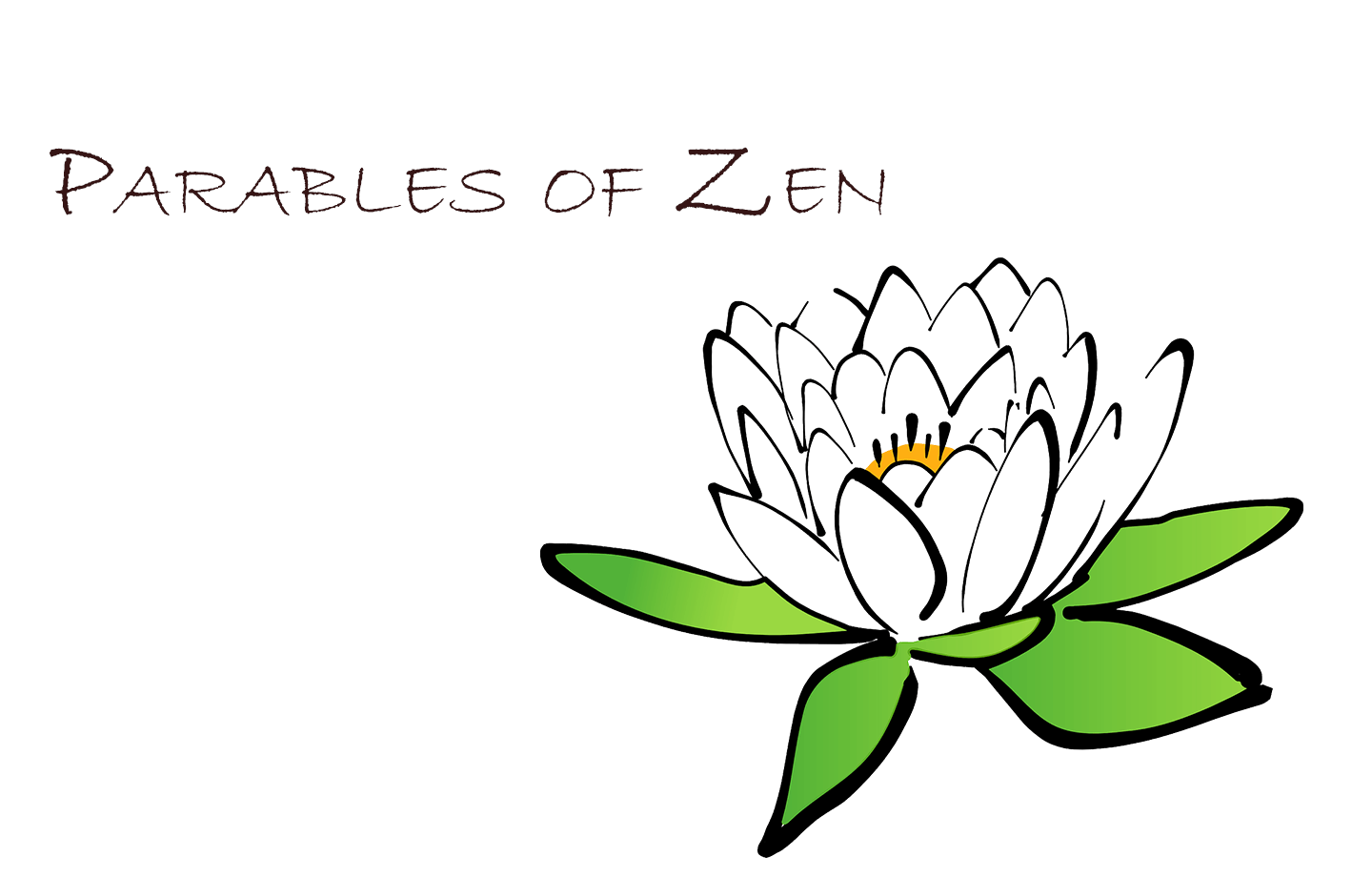
- This event has passed.
Parables of Zen
Sunday, March 21 @ 10:30 am - 11:30 am


how to attend
• To virtually attend, please Zoom in using room number 989 3107 9078.
• To phone into the service, call 669-900-6833, Meeting ID: 989 3107 9078.
For those joining, please mute as soon as you enter the room, so everyone can hear. Please note, the services will be recorded, but at this time, there are no plans to share the recording.
More Information
Religious Education for children and youth begins at 9:30 a.m. in the same room! Learn more here.
If you don’t have a chalice, but want to light one, check out our Making a Chalice at Home page.
Service is followed by Coffee Hour.
Children’s Story
Sermon Audio
Parables of Zen
Sermon Text
As Unitarian Universalists we draw insight and value from all the world religions; this is why many of our churches and fellowships have symbols of the various religions on the walls of sanctuaries, to symbolize our recognition that while we have come out of the Christian tradition historically and also culturally, we’re inspired by the truths found in all religious traditions. Unitarian Universalism also draws inspiration from scientific and humanistic traditions that first came to flower in Ancient Greece and that informed the Renaissance and the Enlightenment. Ours is not a narrow faith, but a wide and expansive one.
So is Zen. Buddhism began in India about 2500 years ago. During those same years in the West, Israel was returning from Babylonian exile; Greece was laying the foundations of democracy, about a century before its classical period.
In India, Hinduism prevailed, with its caste system and great disparity. A young Indian prince, Siddhartha Gautama, had a series of experiences that pushed him to leave his sheltered life and seek something “higher” or more profound. (The legend behind that decision is beautifully depicted in the 1994 movie Little Buddha by Italian director Bernardo Bertolucci and staring Bridget Fonda and Keanu Reeves [HYPERLINK “http://en.wikipedia.org/wiki/Bernardo_Bertolucci] which I commend it to your attention.) After several years as an ascetic Siddhartha resolved to sit under a certain tree until he became enlightened—and he sat there for 49 days. After which he got up and began to teach, continuing for many many years.
There’s no indication that he wanted to start a religion. More of a reformer than a revolutionary, he was, by all accounts, an extraordinary human being. One story has people coming up to him, time and again, and asking not ‘who are you,’ but ‘what are you?’
“Are you a god?” “No.”
“Are you a saint?” “No.”
“What are you, then?” “I’m awake.”
None of this was written down for hundreds of years; everything was transcribed orally. It was about a thousand years after his death, continues the story, before an Indian monk named Bodhidharma brought his teachings—now known as Buddhism—to China. There, over the next many generations, it interfused with Taoism and morphed into Ch’an Buddhism (an early form of Zen). Teachings were transmitted through a body of monks and a series of masters—each patriarch leaving his robe and begging bowl to his chosen successor as a symbol of office. Practices evolved that welcomed simple and uneducated students as well as the scholarly; as remains true to this day, Zen became well suited for lay people seeking a higher spiritual experience.
Students sit practicing zazen—meditation—under the direction of a master. A discourse, including perhaps a question and answer period, sometimes follows, plus personal tutorials between student and priest. Questions about karma, reincarnation, and the exact nature of enlightenment are routinely dismissed as irrelevant and beside the point. “Don’t even go there!” say the priests. Focus on meditation, concentration and physical discipline. If you do so faithfully, teaches Zen, “enlightenment” may well happen. When it does, it comes suddenly and intuitively. It comes as radical insight; as sort of a psychic and emotional breakthrough. This enlightenment experience, known in Zen as satori, is described as unexplainable and as non-rational, or (perhaps more accurately) as trans-rational.
As noted earlier, Zen masters resist describing satori; they beg many questions, act coy and tell their students to “just meditate.” They answer many questions with a loud “Mu!”—which, roughly translated, means “Does not compute!” When they do respond their answers tend to employ paradox and whimsy—and even, from time to time, gentle violence. Consider:
A famous soldier came to the master Hakuin and asked: “Master, tell me: is there really a heaven and a hell?”
“Who are you?” asked Hakuin.
“I am a soldier of the great Emperor’s personal guard.”
“Nonsense!” said Hakuin. “What kind of emperor would have you around him? To me you look like a beggar!” At this, the soldier started to rattle his big sword in anger. “Oho!” said Hakuin. “So you have a sword! I’ll wager it’s much too dull to cut even butter!”
At this the soldier could not hold himself back. He drew his sword and threatened the master, who said: “Now you know half the answer! You are opening the gates of hell!”
The soldier drew back, sheathed his sword, and bowed. “Now you know the other half,” said the master. “You have opened the gates of heaven.”
Another instructional method central to Zen is the use of koans: riddles without logical answers. (What is the sound of one hand clapping? Show me your original face before your mother and father were born.) To the casual observer, koans, and conversations about them, make no sense at all. Koans do, however, have a purpose: to shatter the mind of cause & effect, of logic and of analysis. The master is trying to usher forth in the student a whole new way of seeing and experiencing: to “burst the bag,” and push the pupil head-over-ears into the Great Emptiness: the Great Stillness found in one’s heart of hearts, at the center of one’s psyche, where all things stand without being touchable; where all sounds are, without being heard.
* * *
Little Toyo was only twelve years old. But since he was a pupil at the Kennin temple, he wanted to be given a koan to ponder, just like the more advanced students. So one evening, at the proper time, he went to the room of Mokurai, the master, struck the gong softly to announce his presence, bowed, and sat before the master
in respectful silence.
Finally the master said: “Toyo, show me the sound of two hands clapping.”
Toyo clapped his hands.
“Good,” said the master. “Now show me the sound of one hand clapping.”
Toyo was silent. Finally he bowed and left to consider this problem.
The next night he returned, and struck the gong with one palm. “That is not right,” said the master. The next night Toyo returned and played geisha music with one hand. “That is not right,” said the master. The next night Toyo returned, and imitated the dripping of water.
“That is not right,” said the master. The next night Toyo imitated the cricket scraping his leg. “That is still not right,” said the master.
For ten nights Toyo tried new sounds. At last he stopped coming to the master. For a year he thought of every sound, and discarded them all, until finally he reached enlightenment.
He returned respectfully to the master. Without striking the gong, he sat down and bowed. “I have heard sound without sound,” he said.
Describing satori, as noted earlier, is impossible as it involves bursting through I-Thou, either-or, subject-predicate distinctions—busting through all distinctions—and as such it transcends natural language. One falls into something bigger than their ego. Zen practitioners refer to this as the Great Emptiness or the Void—the matrix out of which everything (and nothing) emerges—and, indeed, it’s our ordinary mind when we stop taking credit for our thoughts and feelings or worrying about them or trying to control them. In the West we’re taught from pre-school onward to think of the willful ego as seat of all personal authority and all agency, but Zen teaches otherwise. Again…
A master was asked the question, “What is the Way?” by a curious monk.
“It is right before your eyes,” said the master.
“Why do I not see it for myself?”
“Because you are thinking of yourself.”
“What about you: do you see it?”
“So long as you see double, saying I don’t and you do, and so on, your eyes are clouded,” said the master.
“When there is neither ‘I’ nor ‘You,’ can one see it?”
“When there is neither ‘I’ nor ‘You,’ who is the one that wants to see it?”
Or consider the story about two monks arguing about a flapping banner on a windy day.
The first said, “I say the banner is moving, not the wind.”
The second said, “I say the wind is moving, not the banner.’
A third monk passed by and said, “The wind is not moving. The banner is not moving. Your minds are moving.”
After five hundred years in China, Buddhism made its way across the Sea of Japan. There it continued to evolve…into modern Zen. Zen’s lack of pretension and down-to-earth simplicity are well known. Consider:
A new monk came up to the master Joshu. “I have just entered the brotherhood and I am anxious to learn the first principle of Zen,” he said. “Will you please teach it to me?”
Joshu said, “Have you eaten your supper?”
The novice answered, “I have eaten.” Joshu said, “Now wash your bowl.”
Down-to-earthiness permeates Zen through and through. Spiritual pride is curtailed since enlightenment is clearly explained as nothing anyone one can “get”. There’s no plateau one reaches, after which everything is clear; nothing to “achieve” and no one to achieve it. As it says in Zen Mind, Beginner’s Mind [Shunryu Suzuki], “Strictly speaking, there are no enlightened people, there is only enlightened activity.”
Radical though it is, describing satori as “blinding” doesn’t quite get at the heart of it. It’s simpler; its benefits less grandiose—as typified in one of its well-known aphorisms, “Before enlightenment: chop wood, draw water. After enlightenment: chop wood, draw water.” In like spirit, we’re told of a time when Bankei [1622-1693] was preaching quietly to his followers, only to have
his talk interrupted by a Shinshu priest who believed in miracles, and thought salvation came from repeating holy words.
Bankei was unable to go on with his talk, so he asked the priest what he wanted to say.
“The founder of my religion,” boasted the priest, “stood on one shore of a river with a writing brush in his hand. His disciple stood on the other shore holding a sheet of paper. And the founder wrote the holy name of Amida onto the paper across the river through the air. Can you do anything so miraculous?”
“No,” said Bankei, “I can do only little miracles. For instance: when I am hungry, I eat; when I am thirsty, I drink; when I am insulted, I forgive.”
Nor is Zen ethereal or other-worldly. Far from it! Zen is this worldly—concerned about suffering here on earth and its alleviation. Consider the 17th century master Tetsugen.
In his time [1630–1682] the holy Buddhist books in Chinese had never been published in Japanese. Tetsugen thought they should be. He planned to have several thousand copies printed from hand-engraved woodblocks, and went from town to town to collect donations so this great work could go ahead. After ten years he had the money needed, and started to have the blocks cut.
Just then the Uji River flooded, and there was famine in the land. Tetsugen took the money he had collected, and bought rice for the starving people. Then he started out to collect his funds again. Whether the donation was a little one or in coins of gold, he was equally grateful. After some years, he had the money again.
Then an epidemic passed over the country. Thousands of families were left without support. So Tetsugen spent all the money he had collected, helping the helpless. When it was all gone, he started collecting it again.
Finally his great project was accomplished, and he died contentedly. Tetsugen’s edition of the holy books in Japanese can still be seen. But among the masters it is said that the first two editions, which have never been seen, far surpass the third.
Compassion and the ability to respond creatively are cardinal Zen virtues.
The story is told of one Shichiri who was reciting the sutras when a robber entered his room, put a knife to his back, and demanded his money. “Over there in the box,” said Shichiri, going on with his recitation.
As the robber was leaving, Shichiri said, “Leave me some for my taxes; they are coming around tomorrow to collect.” So the robber puts back some of the money and started to leave.
“Don’t you thank someone who makes you a gift?” asked Shichiri. So the robber thanked him, and then ran off.
A few days later the robber was caught; and among other confessions, he said he had robbed Shichiri. But Shichiri refused to testify against him. “I made him a gift of some money,” he said. “And he thanked me for it. That was all.”
The robber served a prison term. When he was freed, he went directly to Shichiri and asked to be his student. Such is the overwhelming influence of an enlightened being, able to convert a thief into a disciple, never missing an opportunity to reach out, to heal, to make again whole.
In the 20th century Zen has made inroads in Europe and America. Here on the West Coast it was popularized by Shunryu Suzuki (leader of the San Francisco Zen Center from 1959 until his death in 1971) and by the writers D.T. Suzuki and Alan Watts.
When all is said and done, the heart of Zen (of all Buddhism in fact) is meditation. “Be still,” as it says in the Psalms, “and know that I am God.” Or as the Zen masters would say, “Be still and know that there is no ‘God,’ and there is no ‘you’ either, there just IS.” But you’ve got to be still, you’ve got to meditate somehow, get centered, turn off your description of the world before you can experience this existentially; you’ve got to first empty your cup before you can learn Zen.
Once one does, however, like the burglarized Shichiri, he or she’s able to respond to the exigencies of life much more intuitively and courageously; able to engage life with more imagination and creativity…and with more spirit. The three aspects of the traditional Dharma path come to mind, as stated earlier by Gary Snyder:
Wisdom (prajna): intuitive knowledge of the Mind that lies beneath one’s ego;
Meditation (dhyana): repeatedly going into this mind through meditation, until it increasingly becomes the mind you live in; and
Morality (sila): bringing it back out in the way you live.
Seeking insight in other religions is central to Unitarian Universalist faith. Many UUs I’ve known, including colleagues, are serious students of Zen. For many of them, and for millions of others, Zen stories and Zen practices add coherence and peace of heart to lives formerly restless and at sea. This is what draws seekers to houses of worship in the first place and this we celebrate here at ESUC as well: the promise of greater understanding, joy, and meaning in life!
So may it be. So may it be, here. So may it be here, today…and every day from this day forth. Amen. Salaam. Shalom. Namaste.
Works Consulted:
- Kapleau, Philip. The Three Pillars of Zen (Anchor Books, Doubleday & Co., Garden City, NY, 1989)
- Merton, Thomas. Mystics and Zen Masters (Farrar, Straus, and Giroux, NY, NY, 1961)
- Reps, Paul. Zen Flesh, Zen Bones (Anchor Books, Doubleday & Co., Garden City, NY, 1957)
Snyder, Gary. Earth House Hold (New Directions, NY, NY, 1963)
- Williams, Jay. Yeshua Buddha (Quest, Wheaton, IL, 1978)
More Videos


